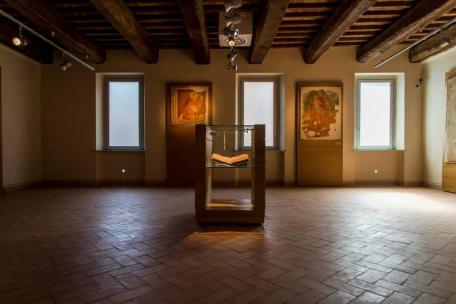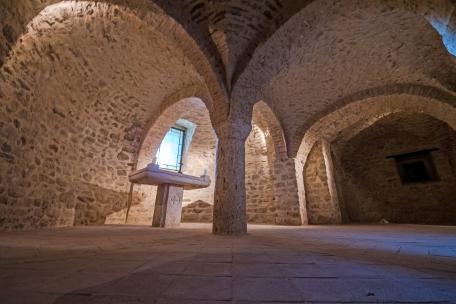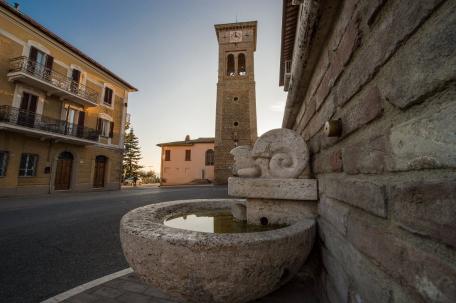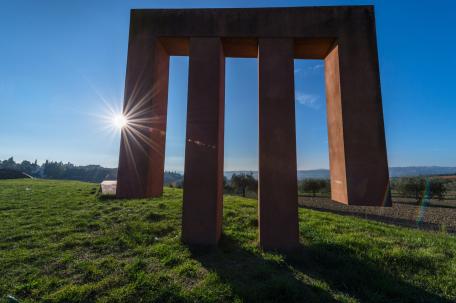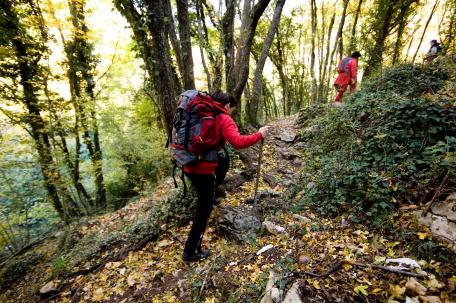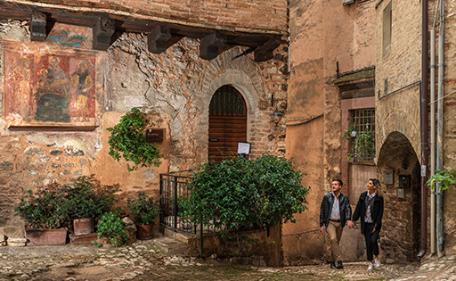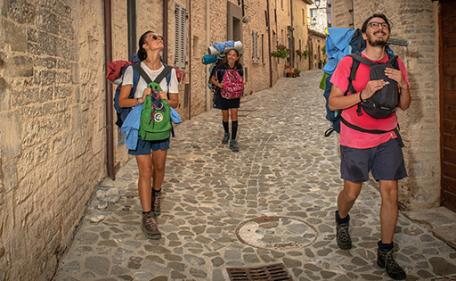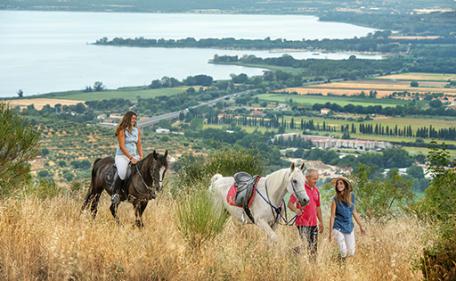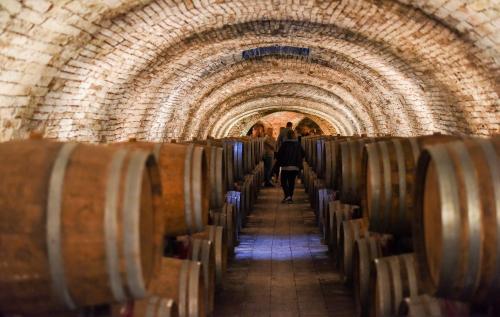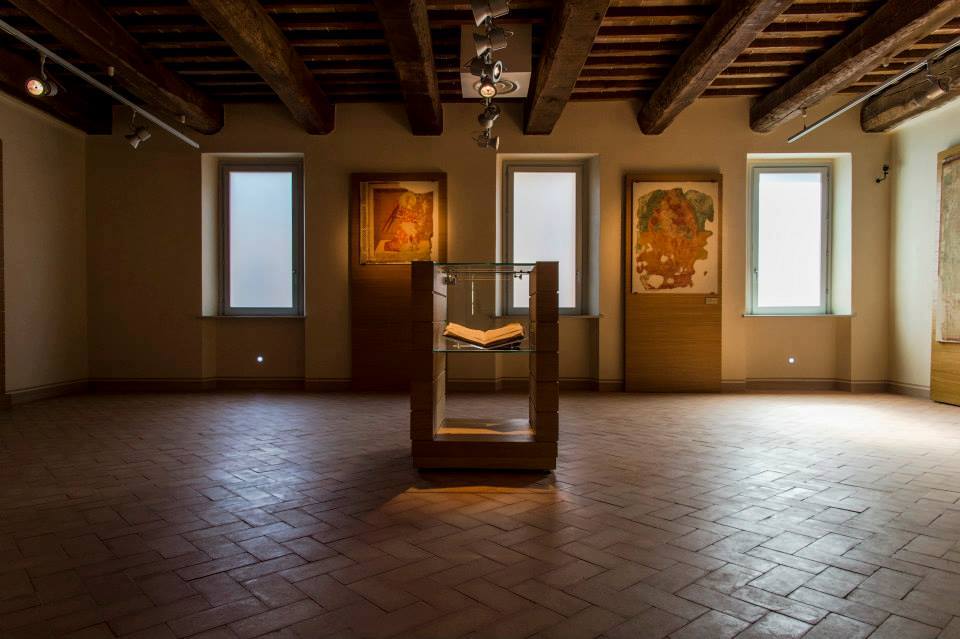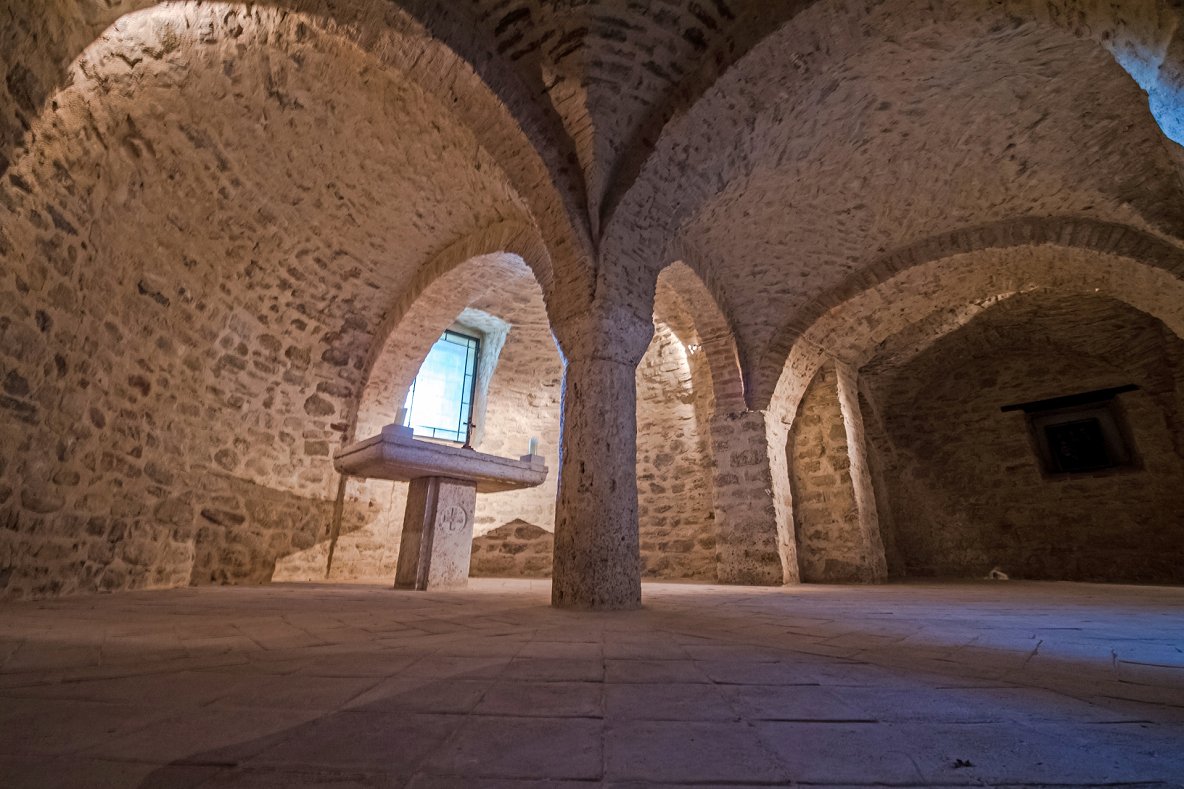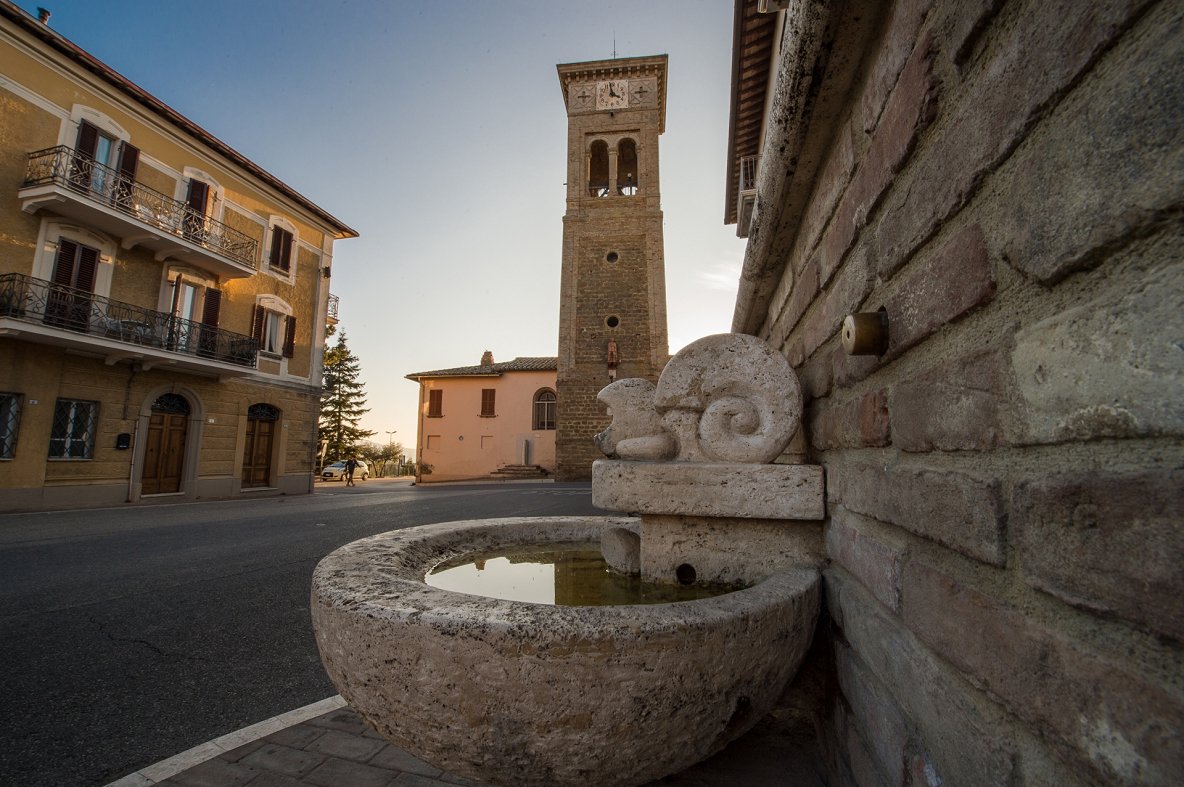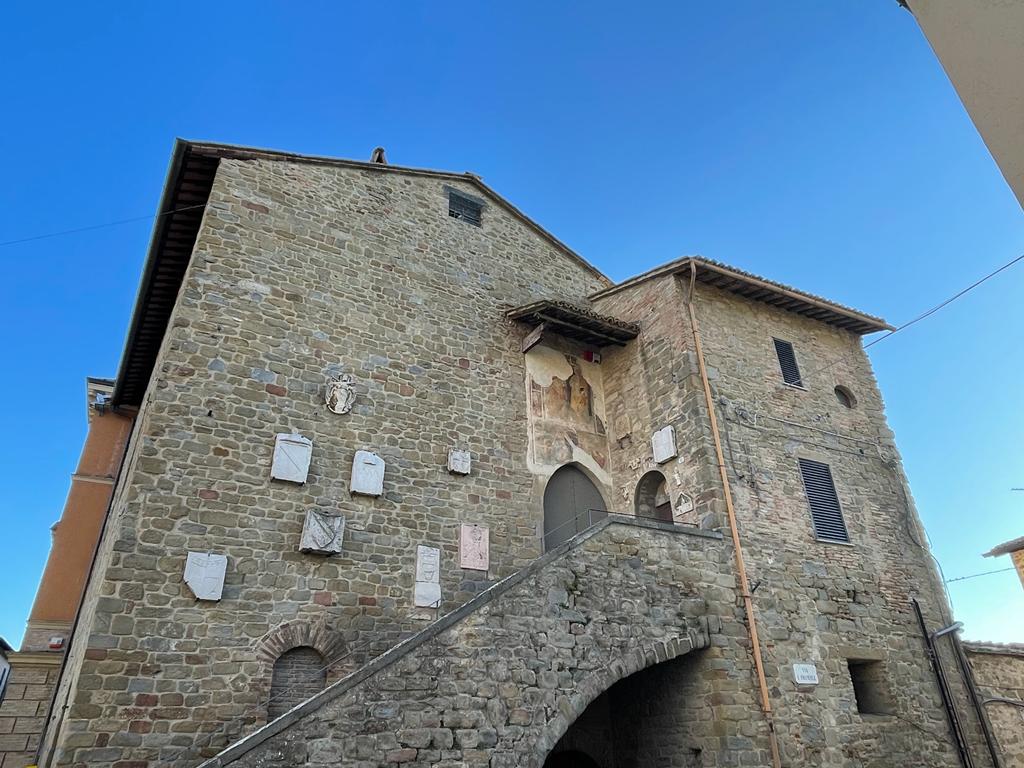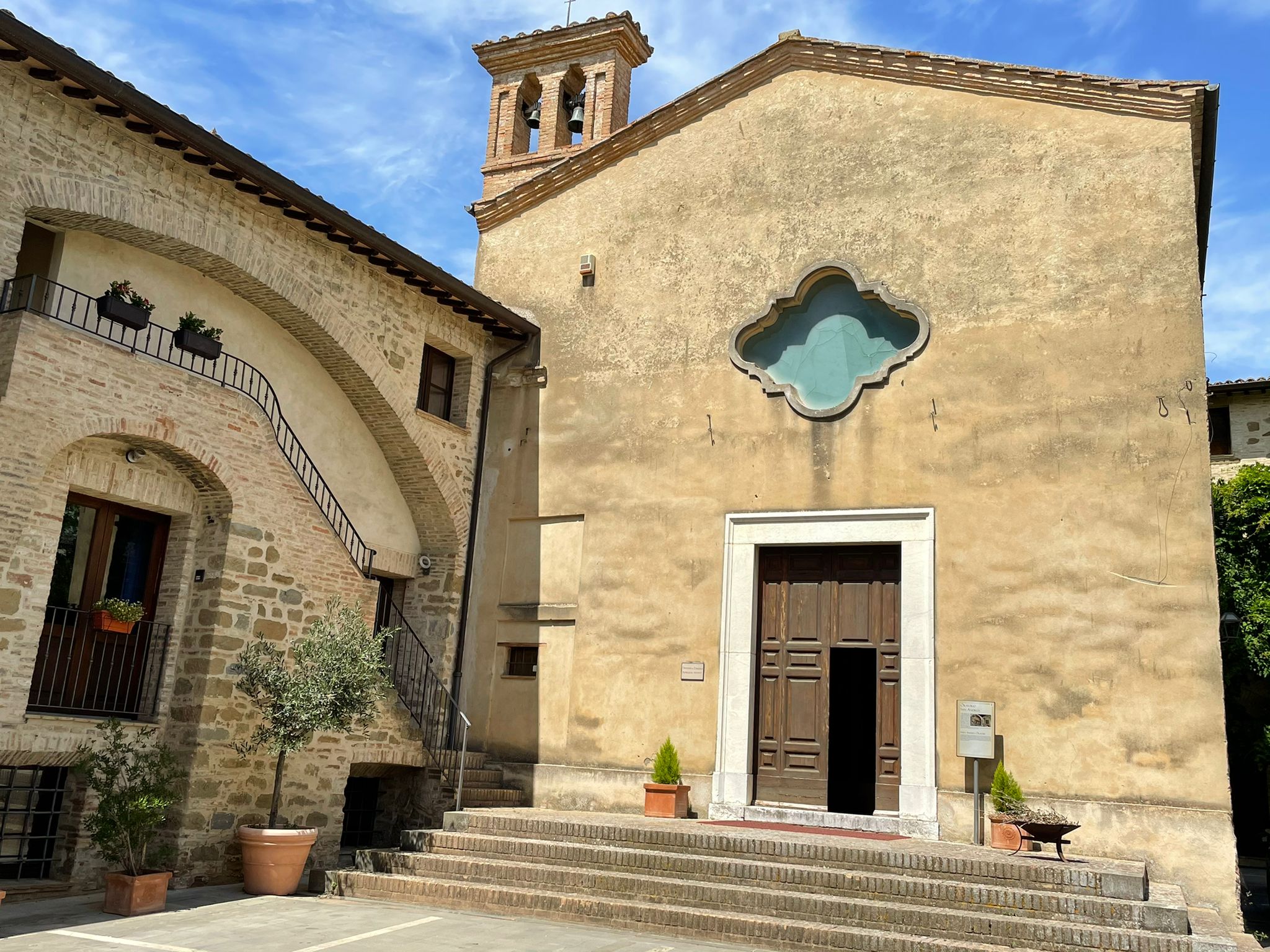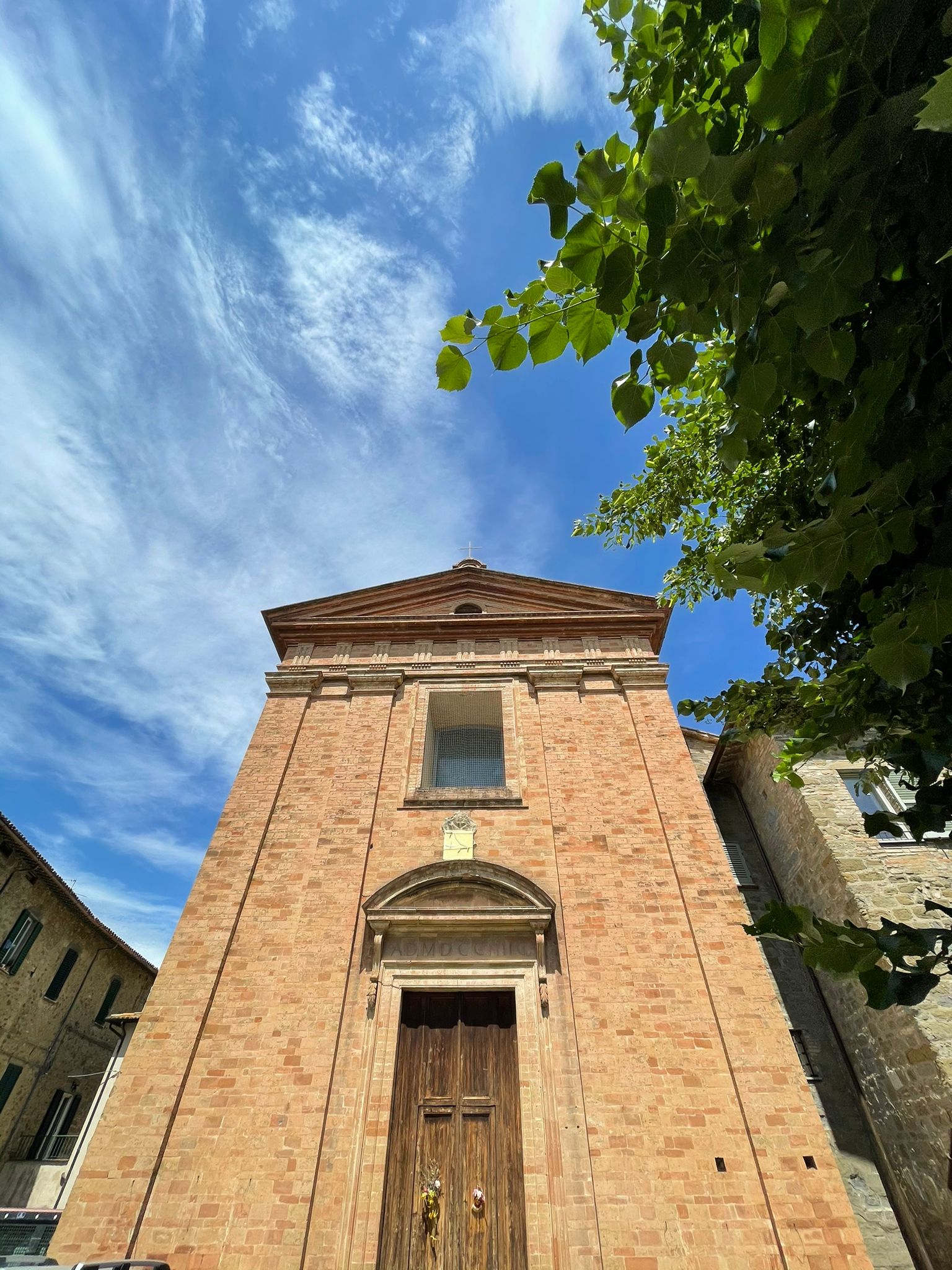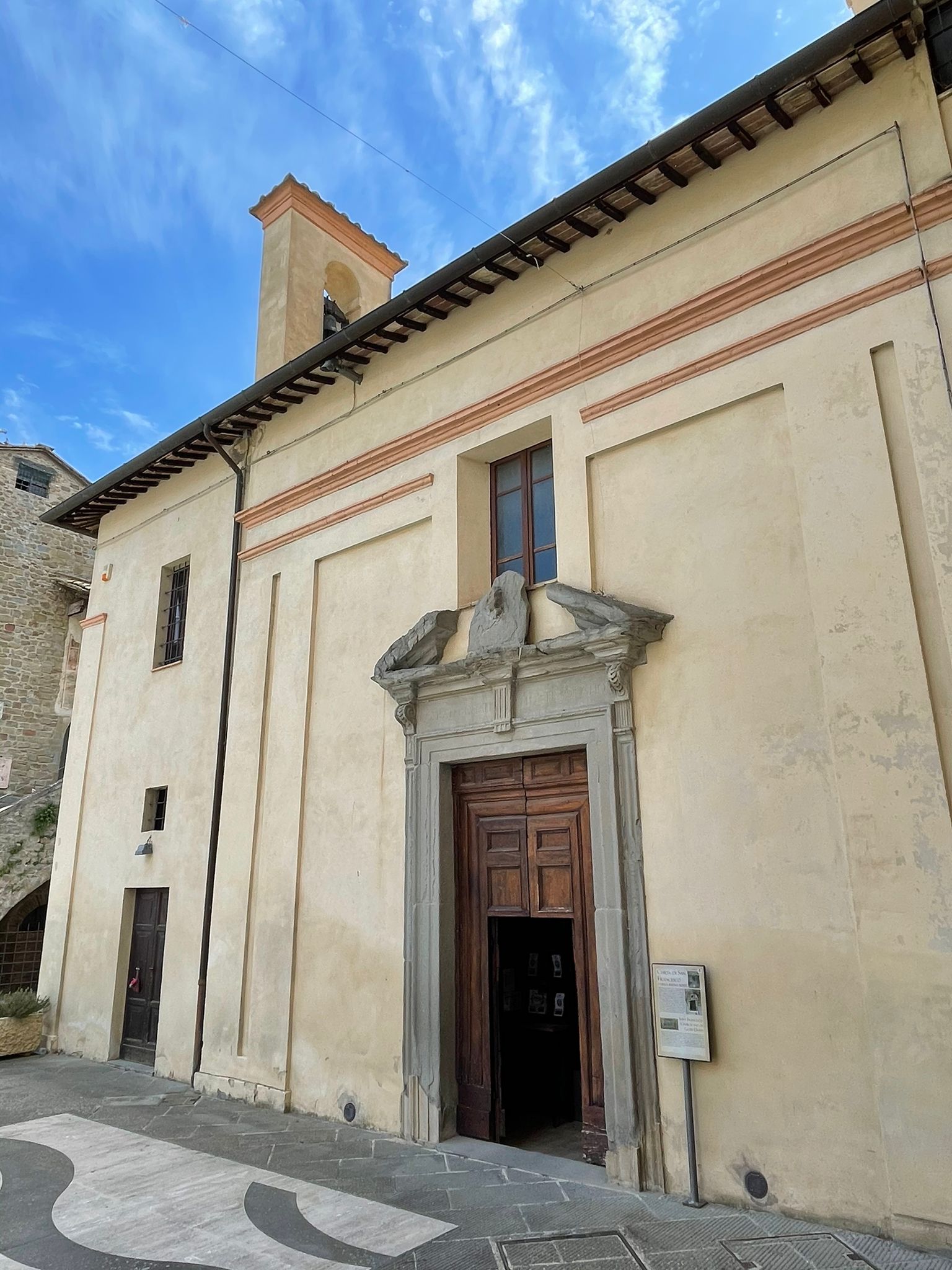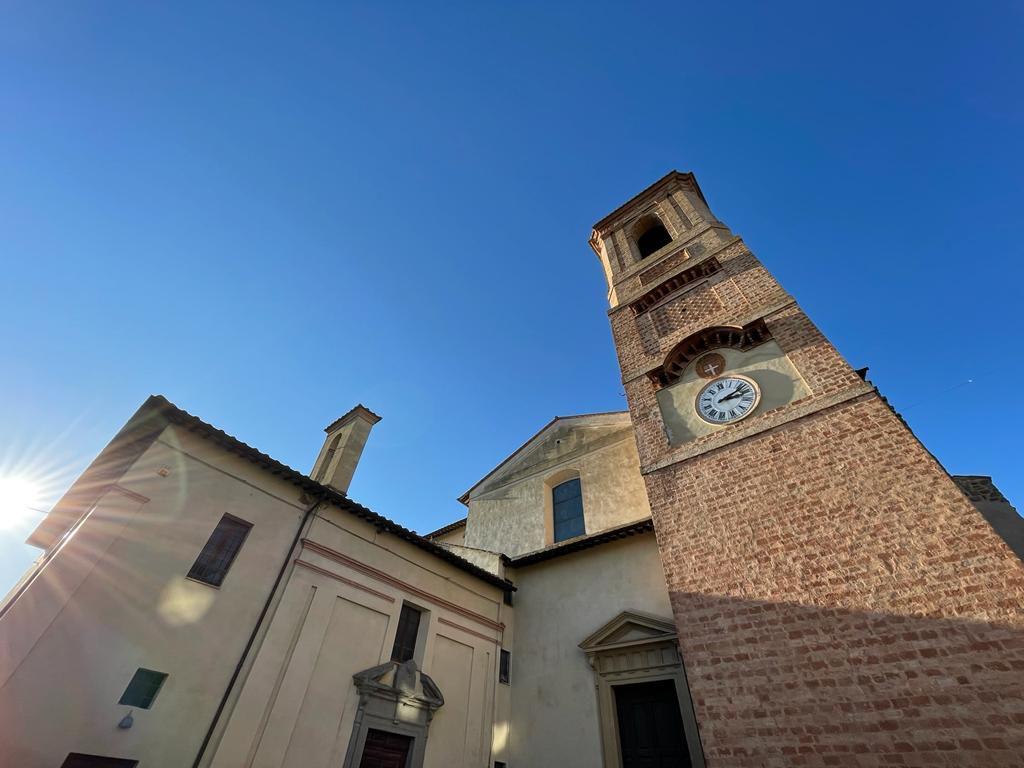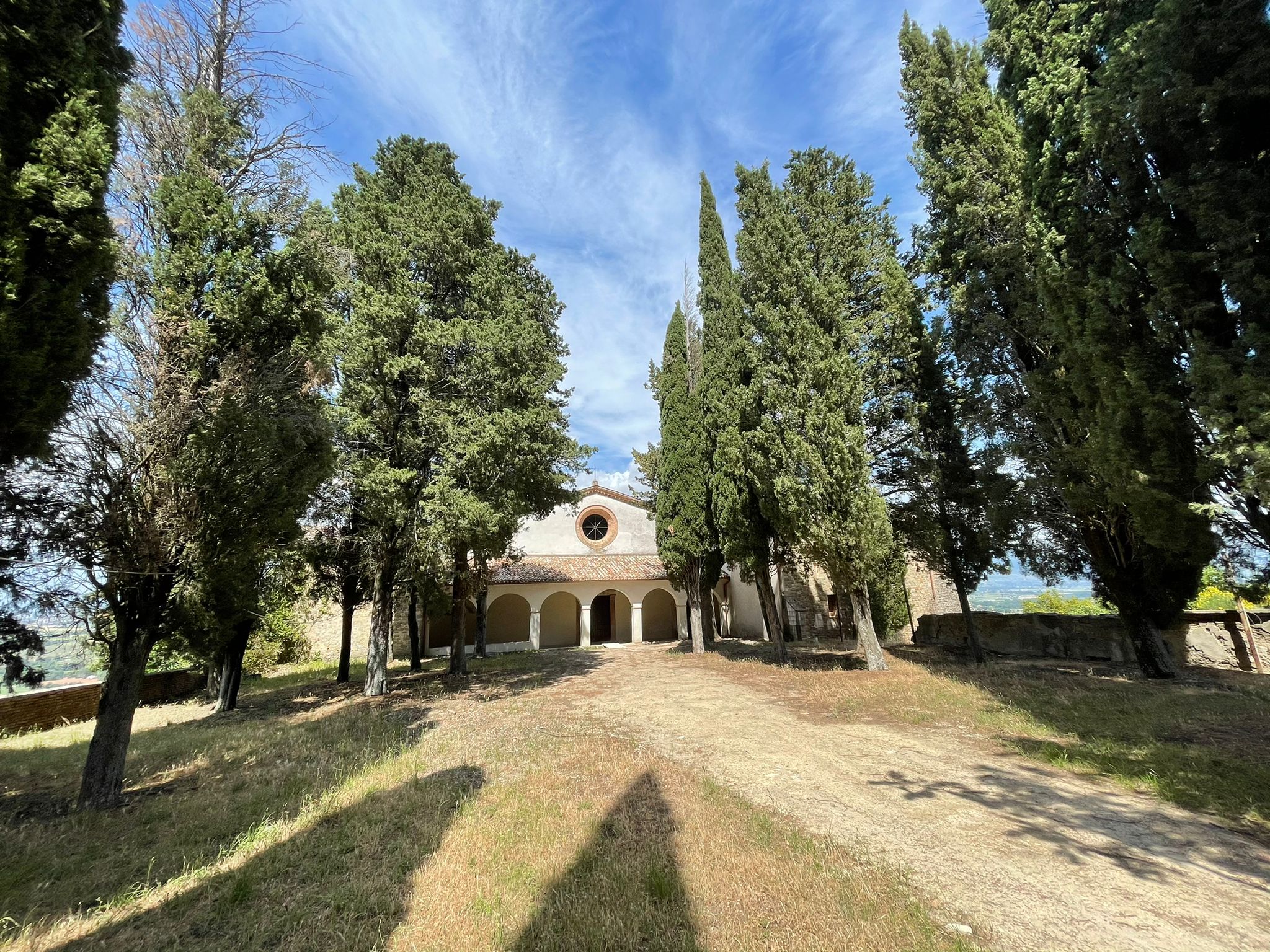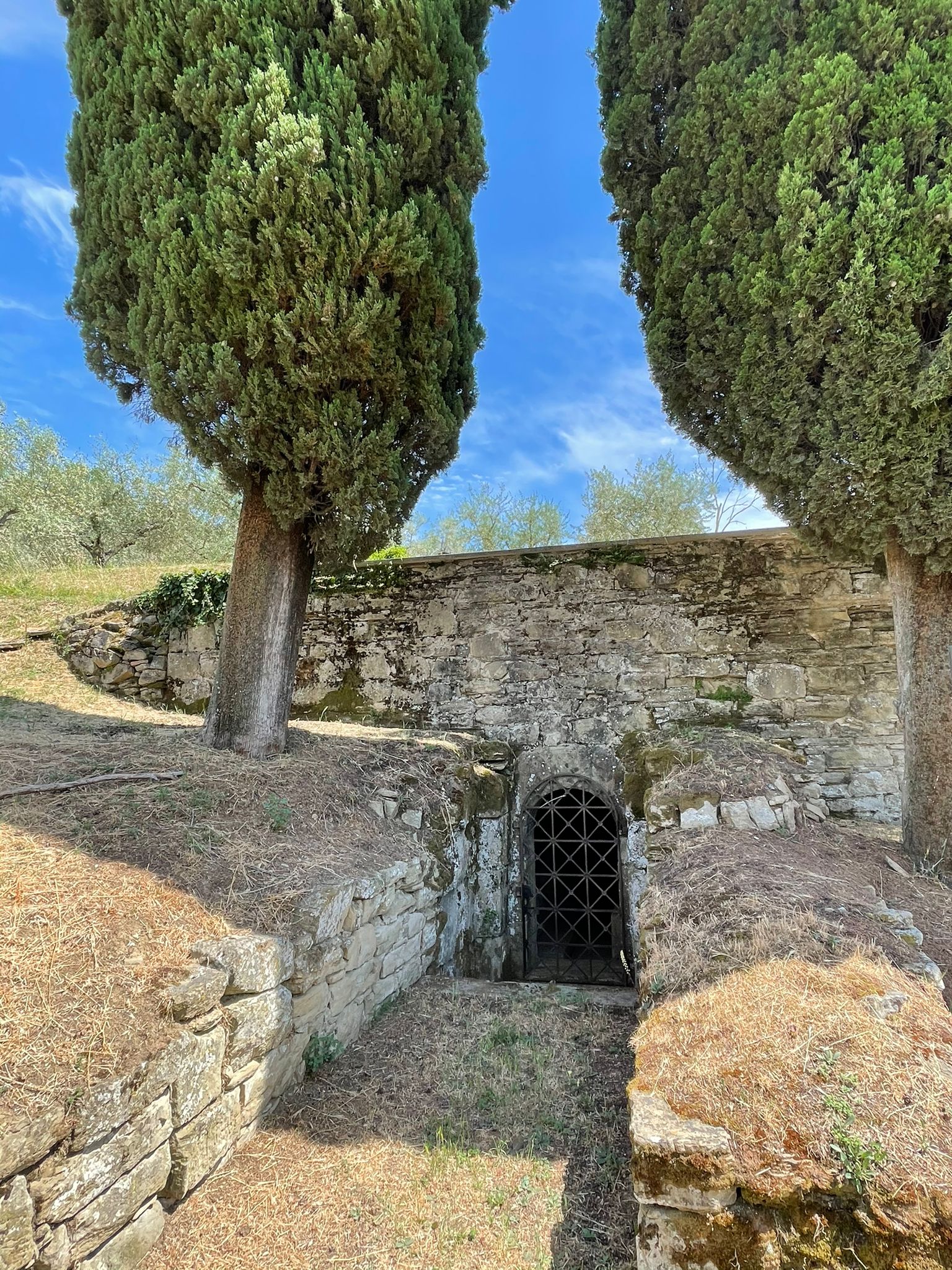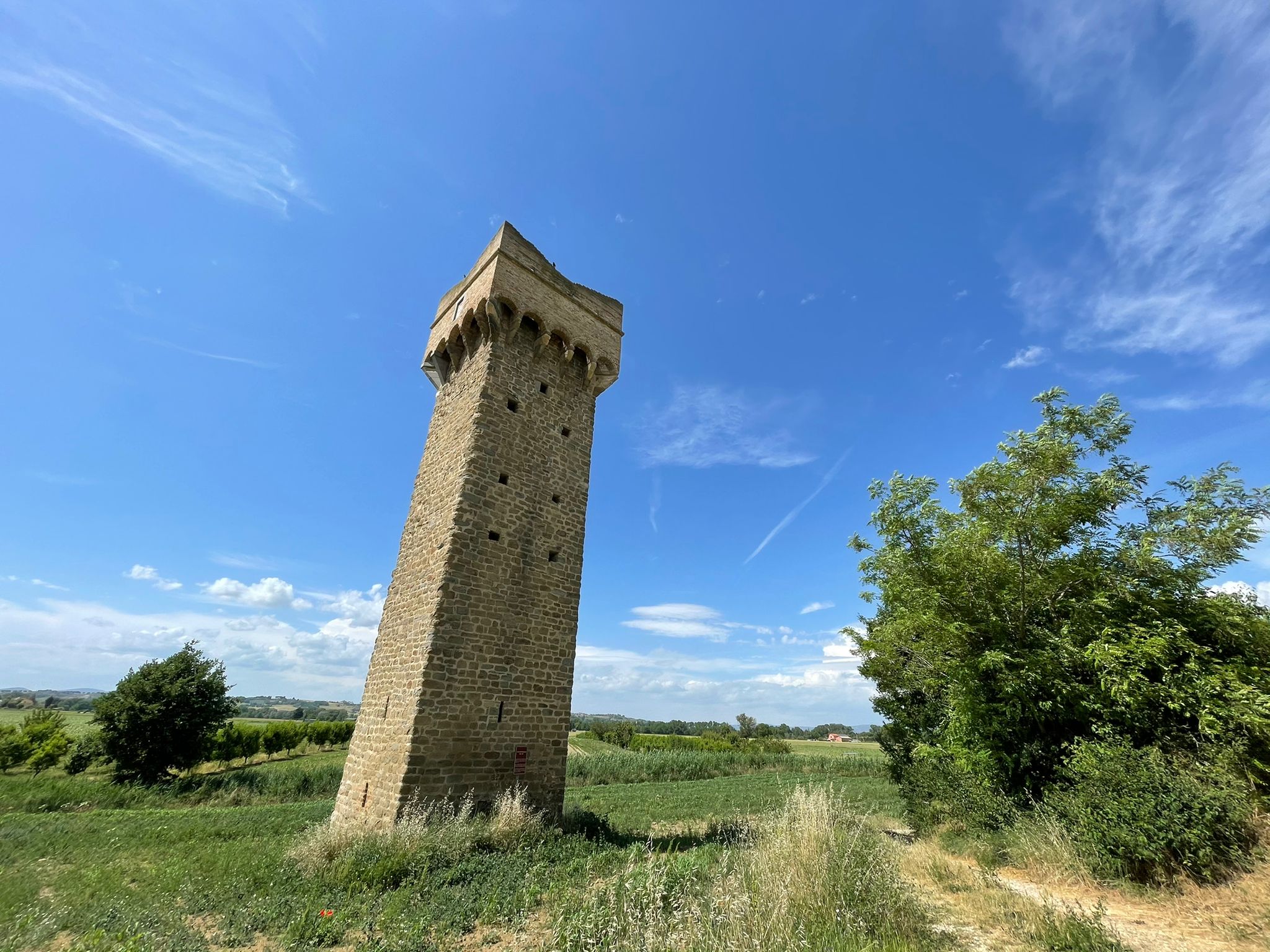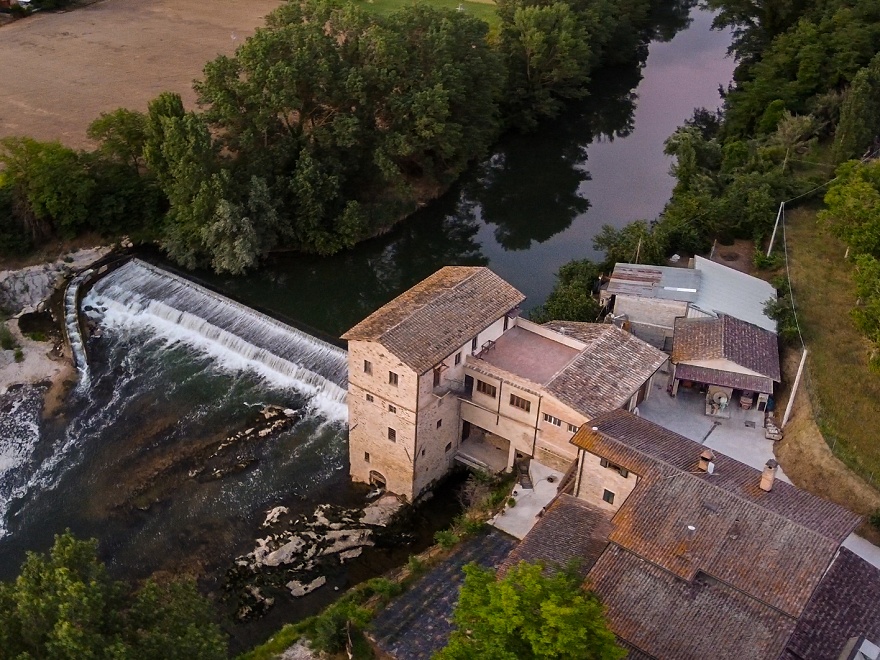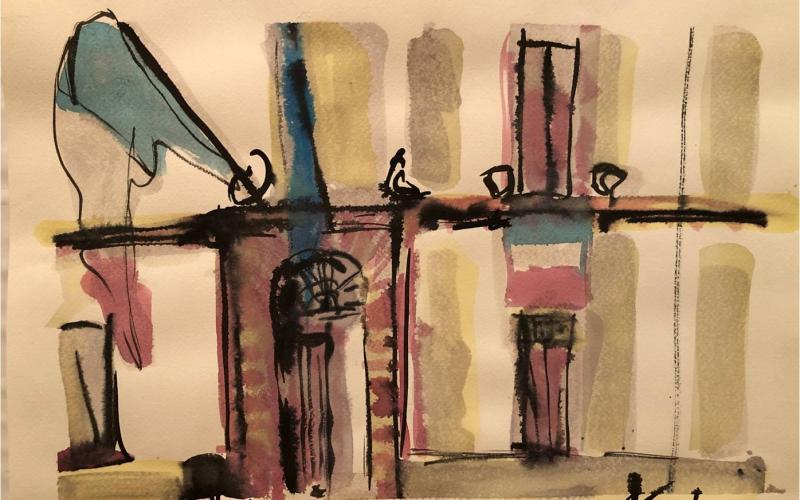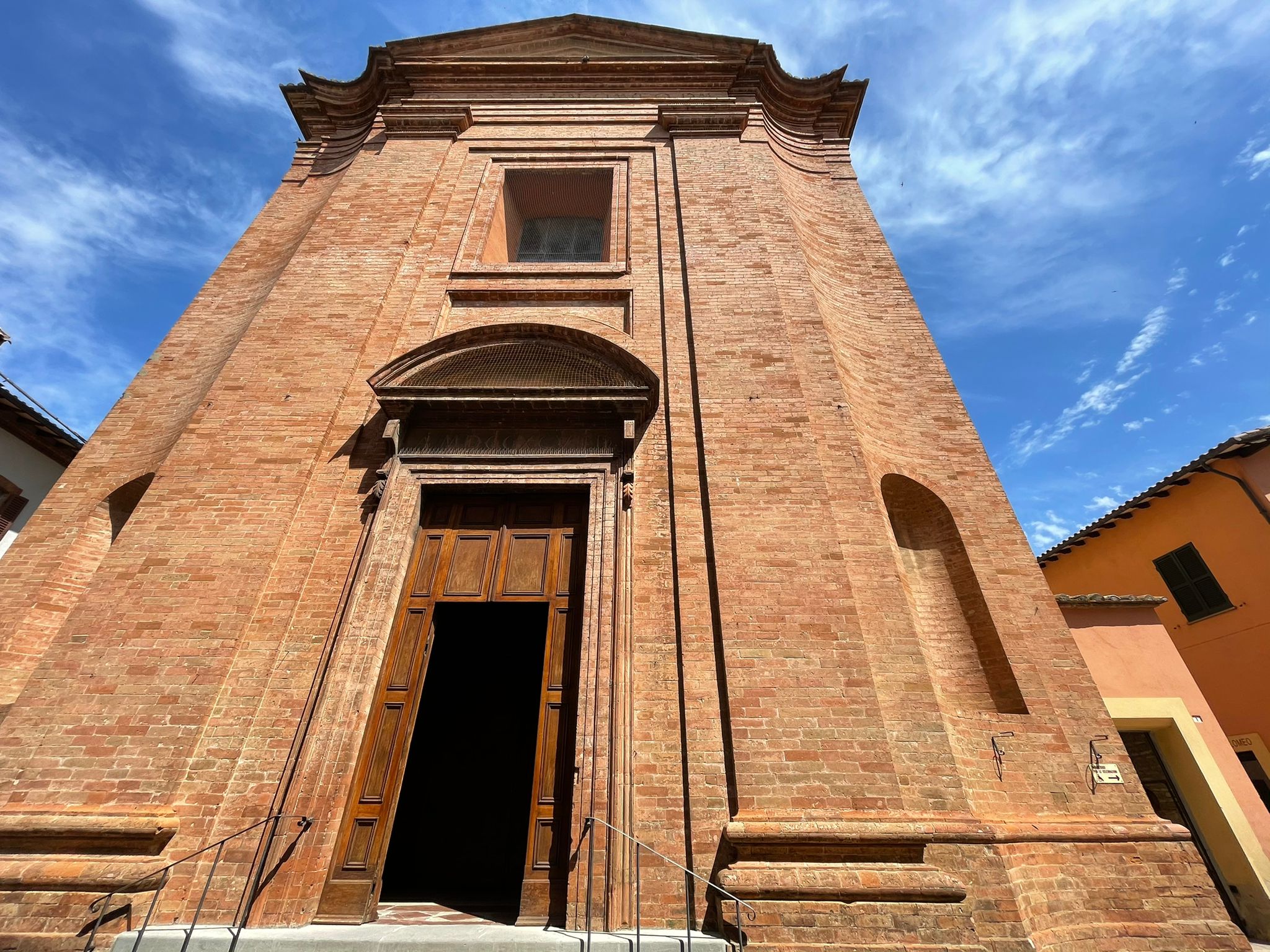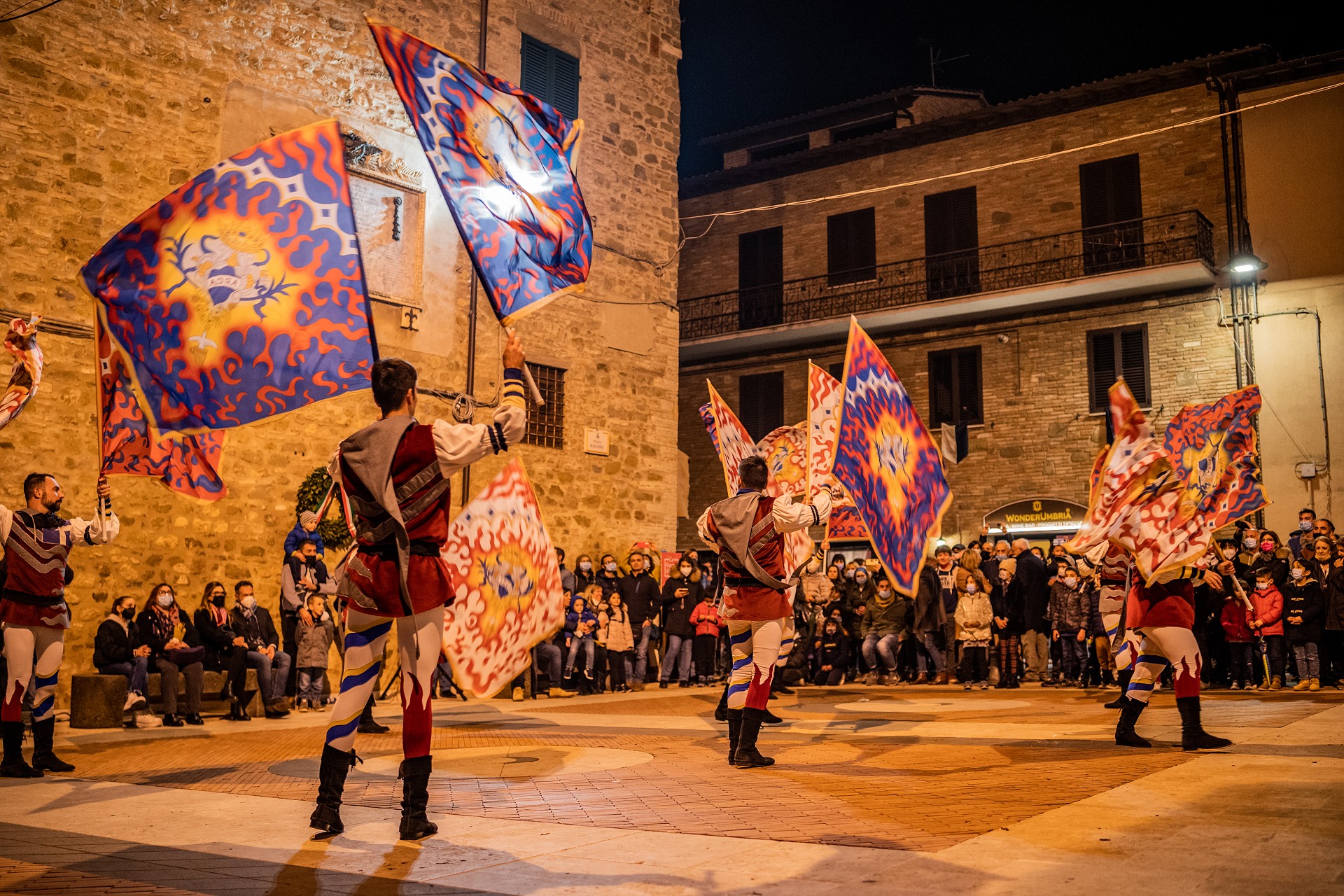The blocks, arranged in horizontal rows, have variable heights and a parallelepiped or trapezoidal shape; the best preserved ones show the signs of the work and in rare cases traces of rusticated rusticated simple walls. In several points you can see the lower blocks of the Etruscan wall resting directly on the rocky bank of the hill, suitably levelled for the installation of the rows.
The visit to the town wall could begin leaving the Vittorio Emanuele II gate (called Santa Caterina), located at the northern end of the wall, and heading left towards Viale Roma, where it meets a sudden right-angle which runs to a length of 26.30 meters and rests directly on the rocky bank of the hill. In this area the twelve visible rows have varying heights and a different state of conservation, some with perfectly fitting joints, others with obvious signs of the erosion of the sandstone caused by the elements, who left in some cases unusual shapes, one in particular known as "the nun's bottom". In correspondence to the Vittorio Emanuele II gate, after which the stretch formed a right angle, the wall is interrupted by a modern reinforcement.
Staying on the west side and continuing in the direction of the the 1 Maggio gate, or Arch of San Giacomo overlooked by the monastery complex suppressed in the Napoleonic era, it meets at the sides of a stretch of Etruscan wall consists of a line emerging from the ground to a length of respectively 5.40 m and 10 m; the blocks have the worn surface and the profiles of rounded joints. Going a few steps you leave the ring road of Viale Roma to cross the long, narrow Market Square documented from 1378, where it meets on the left the fourteenth-century St Peter's gate with drawbridge. At the Romana gate, the southern entrance to the city, you can see a further section along approximately 10 meters. The wall, in part reconstructed, is formed by three rows, incorporated in the lateral structure of the door. In the same area, along Via del Pericolo a stretch of wall is visible that describes an angle at the intersection with Via Tirio, which rests directly on the rocky bank of the hill. A length of about 10 meters and on three rows, the stretch has been interpreted by some as a terrace wall of the southern slopes of the hill, by others as part of a temple building.
On the north side, at the convent of San Crispolto, the Etruscan defensive circuit instead followed a path very different from that medieval one, whose construction made a widening perimeter wall, enclosing the ancient one. In the cellars below the former convent the visible section reaches a thickness of about 2 meters.
To the north of the former convent there is a stretch of four rows protruding from the ground, 20 meters long. Before reaching Vittorio Emanuele gate, starting point of the tour, you can see some blocks embedded in the wall structure redone in recent times. The similarities with the walls of other Etruscan centers indicates the date of the walls of Bettona around the second half of the fourth century BC.

